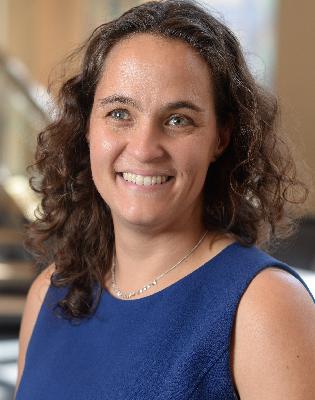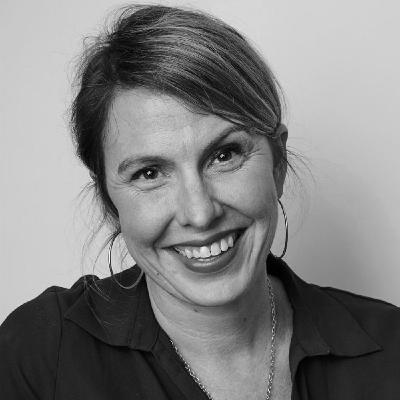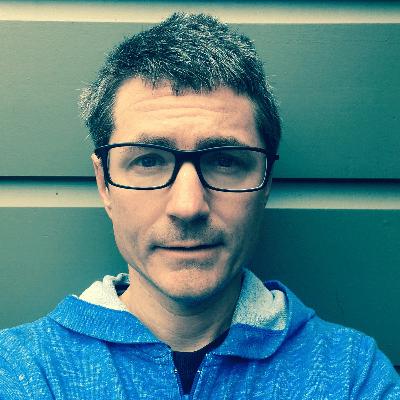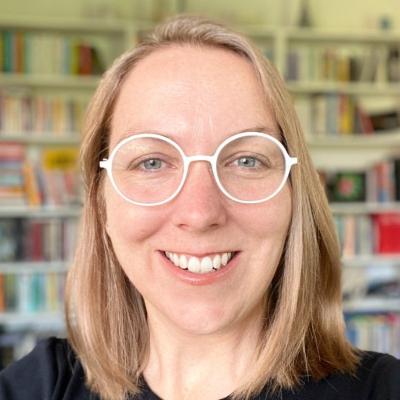52: Design at a Crossroads (ft. Audrey Crane)
Description
Transcript
Jesse: I’m Jesse James Garrett,
Peter: and I’m Peter Merholz.
Jesse: And we’re finding our way,
Peter: Navigating the opportunities
Jesse: and challenges
Peter: of design and design leadership,
Jesse: Welcome to the next phase. Joining us today to talk about what’s next for design is veteran Silicon Valley design and product strategy consultant Audrey Crane, who will share her perspective on the changing mandates for design among her clients, the power that consultants wield that in house teams don’t, and why sometimes the most effective design leaders are those who talk the least about design.
Peter: So Audrey, excited to have you here to work through some of the topics that Jesse and I have been discussing for a few episodes now, on kind of where things are going, for design, design leadership.
But before we dive into that, I think it would be helpful for our podcast audience who might not have met you, read you, heard of you, how do you introduce yourself? What do you do? How should people think of you out there in the world?
Audrey: Yeah. Well, so Audrey Crane, I’m a, partner at DesignMap. So we’re a consultancy. Do I say we’re a design consultancy? I don’t know. I think that’s one of the things we’re going to be talking. Let’s say product strategy, with some design support, company. So we’re San Francisco based. We’ve been around for 18 years, and we do a lot of B2B, B2B2C, like, complex product strategy. But I’ve been around for a long time. I was working at Netscape in the mid-90’s. So I consider myself, I flatter myself, a graybeard of Silicon Valley.
Peter: Does that mean you’ve been doing this work for almost 30 years? Um,
Audrey: That can’t be right. But I was super lucky to be, you know, at Netscape with Marty Cagan. With, I worked for, for Marty. I worked for Hugh Dubberley. I was in the room when Marc Andreessen first started talking about the famous “good product manager, bad product manager” stuff. So it was the olden times, but those people are, in a lot of ways, I think more relevant.
And I was super lucky to get to do that.
Like most theater majors, you know, just like somehow landing in the middle of Silicon Valley during the dot com boom of the late nineties.
Jesse: Your company, is called DesignMap, but you hesitate to call your work design. And obviously there’s, there’s something going on in that. And I’m curious about just your own relationship to design yourself as a creative professional.
Audrey: I did study theater in college and I studied math as well. I studied a form of mathematics that’s like very theoretical. And so growing up, I think a lot of kids still are like, they’re good at math or they’re good at English. They’re good at one or the other.
But theater in particular, as a creative outlet is really, really bounded, right? You have like the script and what you say and what other people say. And then on the other hand, the kind of math that I was doing, which was really like, by my senior year of college, we’re just writing proofs. Like there’s no numbers left anymore. And there’s actually a lot of intuition and creativity that goes into that.
‘Cause like of all the things that we know to be true about whatever kind of math we’re doing, like, what’s the next thing that’s going to get me to where I want to go. Even to the point where I mean, this is like the nerdiest thing I could possibly say, but like reading proofs that gave me goosebumps because they were just like so elegant, you know, and, and so smartly put together.
And so when I graduated from college and I was like broke and happened to be able to, have done some tech work because my dad was an engineer, way in the olden days, I landed at Netscape. Solely because Hugh Dubberly saw my resume and was like, math and theater, like, that’s super weird. I got to meet this person.
And then I got to work for him. And through him, I found that this design thing, which for me, at least is like a perfect match of empathy and creativity, but also like problem solving within boundaries towards a particular goal. And so it, matched my brain pretty well, that for me is like the creativity of constraints is really, really fun. And design is a place where I think still, like, a lot of people don’t know that it exists, that you, don’t have to be just like a highly creative, quote, unquote, right brain person or the other.
Jesse: What’s your relationship to design these days in your practice?
Audrey: I think that you can apply a design process or design thinking, if you must, to pretty much anything. So a lot of times now the design work that I’m doing is like, this client really needs this thing and understanding what the thing is that they really need like that by itself is like a listening and learning process.
Sort of like when somebody goes to the doctor and says, I need this medicine. There’s a lot of questions to understand, like, what’s really going on and is this medicine really going to help you? Or is it something else? That and figuring out, like, what do we do that might help solve that problem, and can we do it within this timeframe and this budget, is actually like a pretty fun, creative process for me. It maybe sounds horrible and dry, but I really love it. And if we can’t help them, figuring out who can help them, and brokering that introduction.
But at the end of the day, it’s still a problem. And I want to understand the problem and think through lots of different ways to solve it and figure out a path there. So that’s not to say that I don’t work on projects specifically. And sometimes I do, and that’s really fun. But a lot of times it’s more at that kind of second order, third order of design, if you like, from the, product.
Now, is that strategy? I don’t know. Yeah.
Peter: Well, and, reflecting on something you said at the outset, where you weren’t sure what to call DesignMap, which has the word design in its name, but you’re like, are we a design consultancy anymore? Which, you know, Jesse and I started Adaptive Path in 2001, and we called ourselves a user experience agency, and we didn’t use the word design in how we defined our work for years, because of associations with that word that we didn’t feel were appropriate for us.
So let’s, get to that, you know, your company is called DesignMap, but you’re not sure if you’re a design consultancy. What’s up with that?
Audrey: OK. We are a design consultancy. So I say that a little bit tongue in cheek, but if we think about what the market wants, does the market want design? You know, I’m not sure that if, I just approached somebody and I said, Hey, we offer design services, that anybody in the market at the moment is going to be like, “Oh, great, I need design services. That’s what I need. I need design services.” Right?
They might need help with stakeholder alignment. They might need help kind of articulating a vision. They might need help solving you know, a problem where the usage of a product has plateaued and they need it to improve. All of these are things that can be solved with design.
But I posted about this recently, and I think that what I’m seeing is that people are using the word design less, and it’s not just quote unquote, “speaking the language of the business,” which I think we’ve been talking about as a design profession for a while now, right?
It’s not just being articulate in you know, whatever, TAM, what’s the total addressable market, but actually just only using those words and design just happens to be the tool that we’re using to solve whatever problem or opportunity we’re talking about.
Peter: When you mentioned people are not using the word design anymore, who people are not using the word design anymore? Is it that prospective clients aren’t using the word design anymore? Is it the designers are wary of that word?
Audrey: Who’s the they? Yeah. I mean, I think famously Katrina Alcorn, like, really put her finger on it when she left IBM and said whatever my next job is, is going to have the word product in the title. I remember a part of what she said was, I feel like I’m doing so much of what is maybe traditionally considered product anyway, like I might as well take the title and have a bit more control and it’s almost like the word product is hard and the word design is soft, somehow.
So I think that was kind of the first famous moment. But then I have a lot of, friends who are VPs of design and at DesignMap, we have a voice of the customer program where we pay a recruiter to recruit VPs of design. And we sit and we talk with them for an hour. We do this as like a regular practice, like taking our vitamins, as they say, right?
And when I hear my friends talk about it, see decks from VPs of design, it’s so striking. And they don’t even point it out to me, but the word isn’t even there. Like, I, just saw a VP of design, it was her budget for next year and her proposed budget had foundations, and investing in foundational work, and acceleration and all these other things.
And I commented to her, you know, you’re a, she is a trained, like, dyed-in-the-wo























